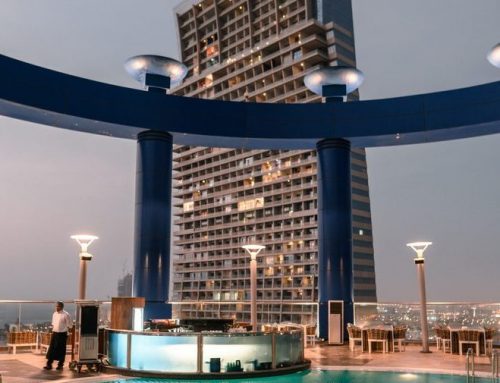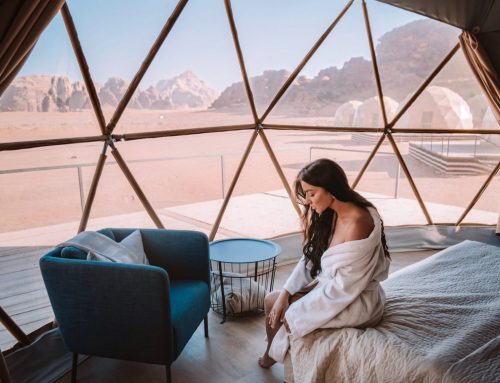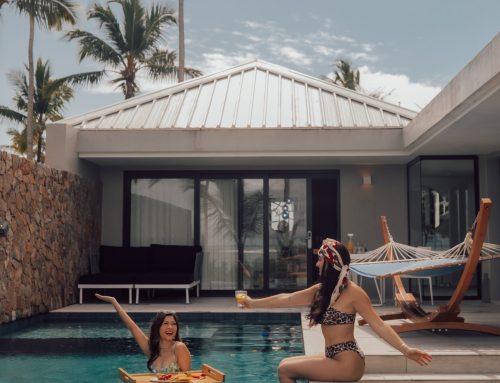Preface
It’s no secret that some of your favorite creators get everything from accessories to airfare free of charge. I say “free of charge” instead of “free” because we all know that nothing in life is free. You are likely reading this post because you are building relationships with brands and, similar to an upcoming job interview, a little coaching can go a long way. Before getting down to business I will preface by saying that building relationships with brands should never stem from your longing to get stuff for “free”. Stuff being clothing, hotels, accessories, flights, etc. The latter is a set up for failure. Allow me to elaborate. When I started writing here in 2016, the idea of “monetization” has never crossed my mind, let alone the thought of the best hotels in the world inviting me to stay with them. The reality is that I started my blog to provide as much as information as I could in one post to avoid people messaging me with the same questions over and over again! Likewise, I’ve been writing since grade school and to this day its my favorite and most comforting past time, besides drinking wine (when the two are combined, I create magic like this post 😉 ).
Here is the deal: you will only be successful if you have a loyal audience. If there is no one to read or look at your content, then what you’re doing is a hobby like reading or playing Monopoly (there’s nothing wrong with that! it just means that you might not be ready for brand work). In order to have a loyal audience you need to be loyal, too. One part of loyalty is consistent interaction: responding to comments, answering emails, etc. The other part of loyalty is giving the audience what they want. If you want to be successful at blogging this is what you should do. If your audience consists of 13-18 year olds then writing about 5-star hotels that they likely cant afford makes you disloyal to both the audience and the hotel brand for whom you bring no ROI. You get the point.
Before you approach a brand ask yourself:
- Am I loyal to my audience? (Will this relationship be beneficial to my readers?)
- Am I loyal to the brand? (Will they have an ROI from me (return on investment: ie. will my readers likely buy their product or stay at the same hotel? etc.)
- Am I willing to work my ass off? (I will get to this one in another article)
- Do I produce great content? (Be honest with yourself, ask your friends for honest opinions. This takes us back to brand loyalty – it’s better to work on your content and offer something valuable than to set yourself up for many offer declines)
- Is it worth it? This goes especially for smaller clothing/accessory brands … keep in mind that many of these companies are small businesses that are trying to hustle their ways to the top. As a small business owner and an “influencer” (whatever they call me 😉 ) I can tell you that supporting a brand rather than asking for a freebie is sometimes simply the better thing to do.
The Importance of a Media Kit
Brands get anywhere from hundreds to thousands of emails a day from people like you and me! You have about 10 seconds to make an impression on the PR contact thats on the opposite end of the screen (think about it: at 300 emails a day for larger brands, allocating a minute to each email leads to 5 hours of just reading which is more than half of an average working day). You can fill the body of your email with sesquipedalian prose and interesting facts and anecdotes but the reality is that you might not even have time for a 20-30 second elevator pitch. This is why you need a media kit! I’ll be honest, when people tell me that I have a few seconds to pitch and “stand out”, I squirm, zone out, and nearly faint. A media kit that’s done right can easily help the person you are reaching out to get everything they need just by glancing at it. Pardon my cliche: a media kit is essentially your resume, with a little creativity sprinkled on top.
If you’re not like me and have a creative mind – you’re already ten steps ahead. If you’re more like me and already feel slumped about how to organize, color coordinate, and design your kit … put your email in the box below and I will send you a template, “free of charge” 😉
Every brand is different and this list may not be as comprehensive as it could be – but, these are all the things I have in my media kit and I’ve had great feedback so far!
What to Include
- Keep it simple – the person on the opposite side of the screen does not have a lot of time. Ditch the cover page that includes one picture of you and your name = waste of time.
- If you are just starting out and don’t have past collaborations, keep your kit as one page with key information! Just as resume’s shouldn’t exceed one page, media kits can be one page, too!
- Talk about yourself in first person. Introduce yourself as if you and the reader are in person. What’s your name? Age? Where are you based? What’s the intent of your work? What do you cover (hotels, beauty, lifestyle?) Use this section to give an anecdote from your life to make it personal! Perhaps you survived a near death experience and now you want to teach people about the beauty of life. Maybe you were bullied about your looks and now you’re promoting positivity? THIS IS THE SPACE FOR YOU TO GET PERSONAL. However, keep it short!
- Pictures Help your reader put a face to your name. Images with your face are intimate and important. My front page has two images, one with my face and one of my favorite destination shots. If you have a portfolio of previous brand work, absolutely include a separate page (last page) with your favorite shots and caption them. Pictures are also super important if you have lower stats but great content. Again – please only build relationships when you know you have something to offer … if your content is not quite there yet, work on it first. If you have great content, that has to show more than the stats on your media kit.
- Stats – I know it may be discouraging to share numbers especially if you are just starting out, but statistics are important. Demographics, weekly reach, monthly readers (blog), social media reach are some of the ones I include. For smaller audiences I recommend adding a “collective social media reach” (instagram + facebook + youtube, etc) rather than breaking it down one by one. “Conversion = Loyalty”. It’s not always about how high your numbers are but how those numbers convert. You can have a small following but if the majority of your readers/viewers are reading your posts, liking and interacting with your work … you are actually more valuable than someone who may have tens of thousands of followers but minuscule interaction! There are portals like this one that can give you an idea of what your engagement rate is!
- Social handles, website, contact info – the importance of this information goes without saying. In a .pdf media kit (which yours should be), you have the ability to hyperlink the information above meaning when a person clicks on your handle or website or contact info, it will redirect to those sites! Again, make life as easy as possible for your reader.
- Past collaborations (if applicable) – If you’ve worked with brands in the past, include them (bonus if you created cool content for them). This not only shows credibility but also gives other brands an idea of your style and what you’re capable of.
- Pricing (if applicable) – Personally, I do not include prices anywhere in my media kit. There are a few reasons for this: 1. I like to negotiate, therefore putting forth a price from the start can either put me at a disadvantage if the company had a larger budget for a project or it can lure a brand away that may not have the budget that I put forward. 2. Building relationships is more important to me than getting paid. This is a personal decision: I would rather have a strong and loyal relationship with a brand than chase money deals. I have a business, I know that not every brand has a large budget or a budget at all and thats ok – if I genuinely like a product and what it stands for and more importantly if I feel like it would benefit my audience, I don’t chase the money … money can always come later.






Wow Elona! This is super helpful to me. I’m working oh my media kit now and this is literally answering all of my questions! Thanks so much!
Yay, thanks Kai! So glad it helped =)
This has been so incredibly helpful! Thank you for sharing!
I am so glad!! thank you =)
Glad I came across this post Eolana! It was such a smooth read and I got so much insight and tips from it. You’re amazing!
Im so glad 🙂
Thank you for the awesome post Elona!
You are most welcome!
Thanks for these insightful and honest words! I’m in the infantile stages of transitioning and rebranding my website and my vision, and after sifting through loads of blogs and “how to’s”, I’ve found your site and this article really helpful. A great brand really does take a Herculean amount of effort, especially at the start (as I’m quickly discovering), so it’s inspiring to see someone who’s already done it, and with such finesse. Love your page!
Thanks so much Elona, I’m working on starting a personal blog and this gave me some insight on content before just jumping into it. Your tips are highly appreciated! ?
Awesome!! My pleasure =)
great tips! I’ve started working with more brands and was looking to polish up my kit and this was super helpful (:
Im really glad!! 🙂